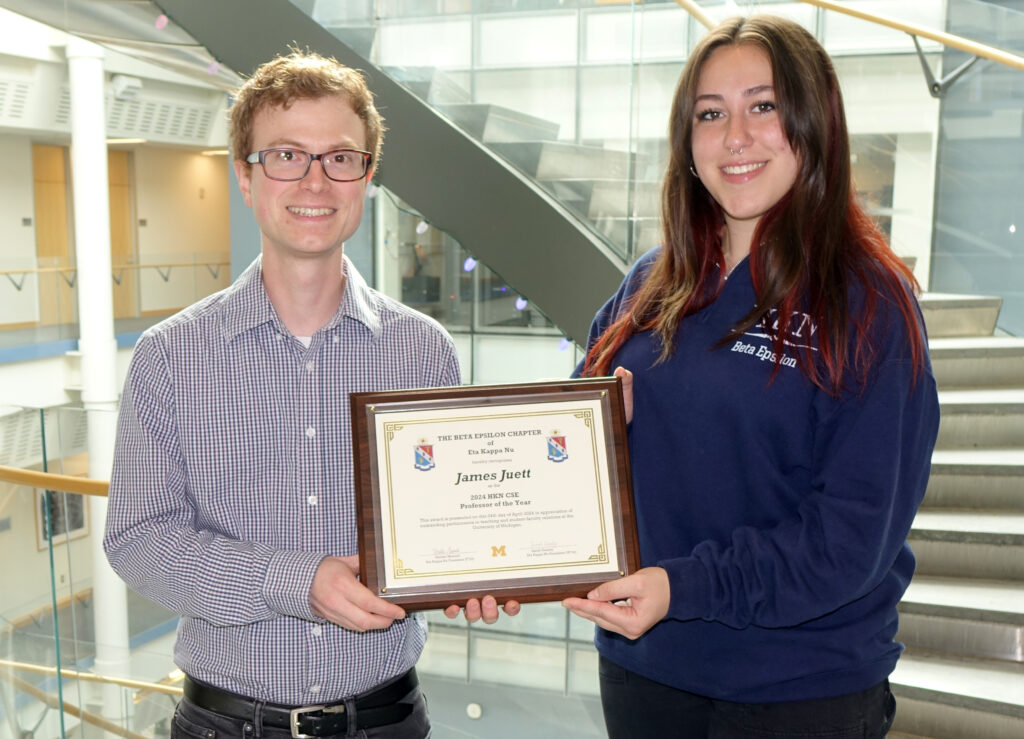James Juett voted 2024 HKN Professor of the Year

EECS students have spoken, and the results are in. Dr. James Juett has been named the HKN Professor of the Year in CSE by the Beta-Epsilon chapter of Eta Kappa Nu (HKN), the national honor society for electrical and computer engineers.
“I’m honored to be selected for this recognition,” said Dr. Juett, who is a member of the teaching faculty in CSE. “It’s also a moment to reflect and appreciate all the hard work and care our students put into learning each day, and I’m grateful I get to be a part of it.” Juett is receiving this honor for the second time; he was previously elected for it in 2017.
The HKN Professor of the Year Award is awarded based on popular vote by all undergraduate and graduate students in programs administered by the Department of Electrical Engineering and Computer Science. The voting is administered by HKN leadership, and two faculty are selected each year, one in the EECS division of Computer Science and Engineering and one in the division of Electrical and Computer Engineering.
Juett joined the faculty at Michigan in Winter 2016 after receiving his PhD in Computer Science from Michigan in 2015. In 2022, he was an inaugural recipient of the Instructional Team Award from the Office of the Associate Dean for Undergraduate Education, which recognized the ENGR 101 instructional team for pivoting to a flexible, hybrid model for teaching and learning during the COVID-19 pandemic to create a more engaging, equitable, and inclusive learning experience. He teaches EECS 280, Programming and Data Structures, one of the largest classes at the University of Michigan, as well as ENGR 101, Introduction to Computers and Programming.
Juett’s research interests are in computer science education, particularly interactive program visualization tools, pedagogy for asynchronous learning, and inclusive teaching.